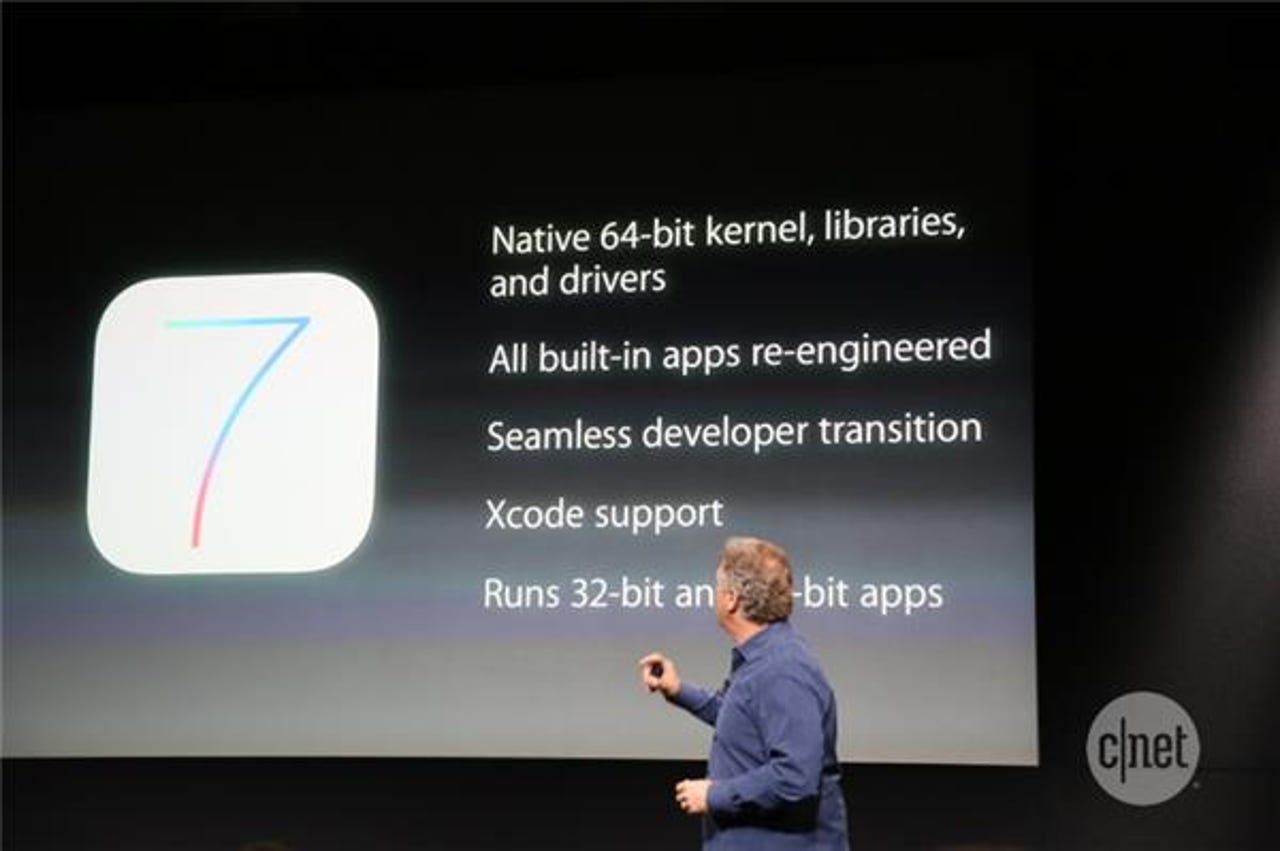The iPhone 5S goes 64-bit: Will it matter?

Apple's launch of the iPhone 5S, the high-end device in the company's one-two smartphone punch, brings the first 64-bit mobile device to the market. What's unclear is whether the 64-bit smartphone will be much of a selling point for anyone who doesn't play Infinity Blade.
Phil Schiller, Apple's marketing chief, talked up the iPhone 5S' graphics capability and raw processing power. The A7 processor that powers the new iPhone is Open GL/ES 3.0 for gaming. In a nutshell, the new iPhone can run graphics intensive applications well.

More iPhone and iOS 7
Shiller added that the A7 is "desktop-class architecture". Most mobile chip players are touting quad-core systems. Schiller added:
"The PC world made the transition from 32 bit to 64 bit and it took years. Today you're going to see that Apple is going to do it on one day."
That's nice, but Apple is going to need more than gaming capability to make folks care about 64-bit. Apple rarely has talked specs as a selling point of their devices. With the iPhone 5S launch, Apple took a 64-bit pitch right from the PC industry's playbook.
But here's the difference. Apple needs 64-bit for fingerprint authentication as well as the camera features the company has added to the latest iPhone. In other words, 64-bit is an enabler to features that may matter to the masses.
There's also an enterprise play here too. With 64-bit and fingerprint authentication, Apple can make a good security case to companies as well as support end-to-end virtual private networks. Third party support will determine if Apple has more enterprise mojo due to 64-bit.
Apple did make the iPhone 5S backward compatible and developers can reportedly transition apps to 64-bit easily. There's a good reason for that move: 64-bit is a selling point in only limited cases. Like the PC industry saw, the ecosystem has to catch up to 64-bit and that can take years.